As we are spending our summer – as usual – in Slano, Southern Dalmatia, it is easy to visit the nearby peninsula of Pelješac, which is small enough to cover by car in one day (its length is 70 km only). Pelješac is connected with the mainland by the recently constructed Pelješac Bridge, while the historical town of Ston is located at its southern end.
We had often visited Ston before, as our campsite – Camp Rogač – is only 20 km away from this impressive town. Its salt flats, well-preserved city walls (originally more than 7 km long) and delicious oysters are a must for all who pass by.
But it is also interesting to explore the fishermen’s villages, picturesque hamlets and secluded bays with emerald blue water around Pelješac. During the last few years, we have followed many narrow and winding roads, happy that there was hardly any traffic… and we enjoyed the fantastic views.
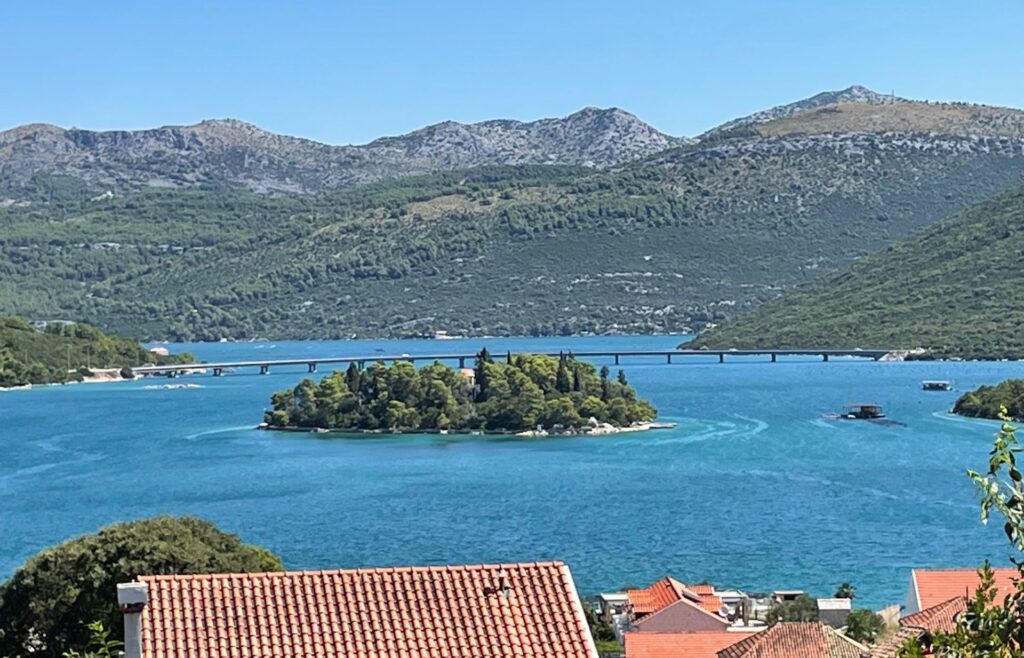
This summer we discovered several villages in the surroundings of Ston. We followed a narrow road along the Bay of Mali Ston, which took us to the village of Hodilje. In front of this village lies the “Island of Life” (Otok života), covered by Mediterranean vegetation. The island contains 11 buildings, but nowadays it is inhabited by one person only, an 80-year old woman.
This road ended in Luka, a charming settlement with stone houses and a beautiful beach ….
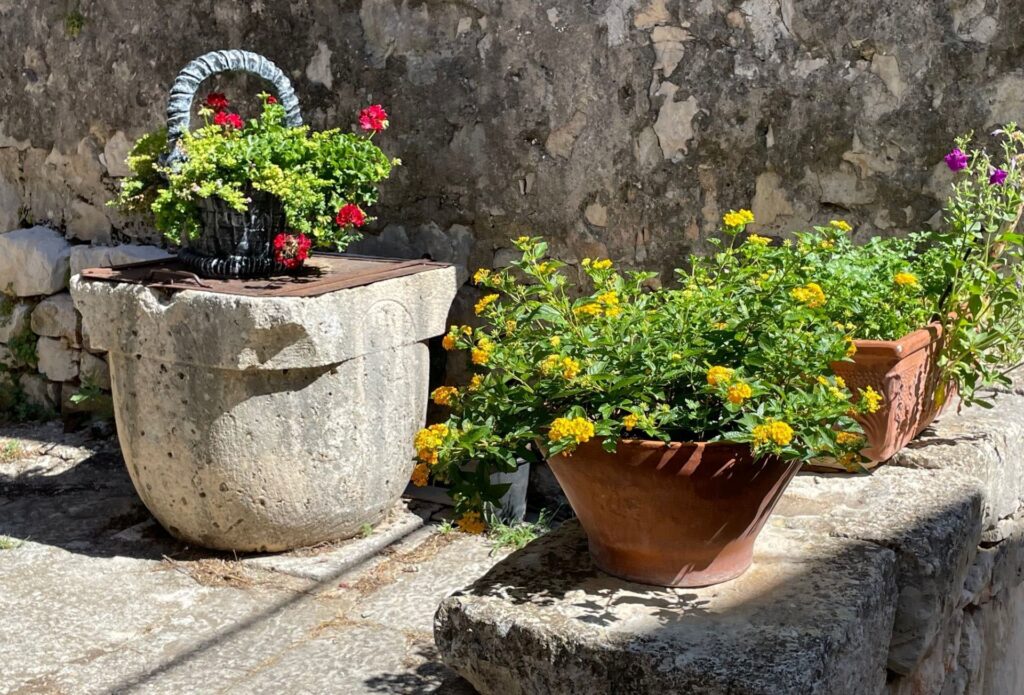
From Ston we also took another direction – to Broce, a cozy village full of flowers, where we found an abandoned monastery, the major part of which was in ruins.
Can you imagine how tiny these sleepy villages along the coast of Pelješac are? There is something about the way they look, the sounds and scents I sense there, which make me feel like stepping back in time.
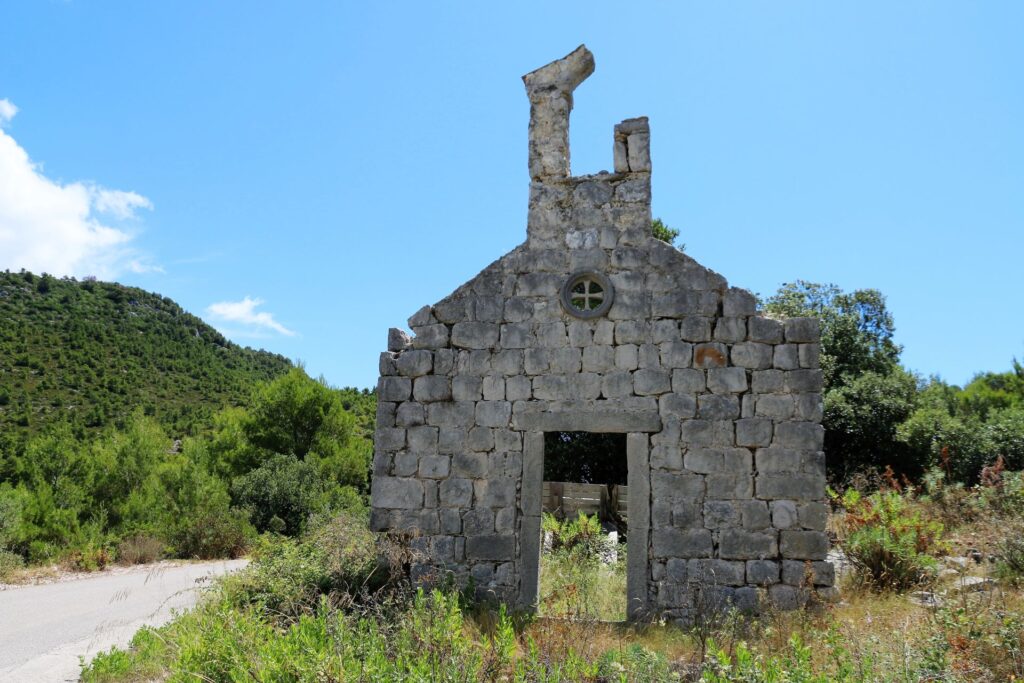
But roaming around, we were particularly struck by the picturesque village of Kobaš.
Although it is only 7 km away from Ston, this village is not easy to reach. It is surrounded by mountains and hills, and the narrow road from Broce and Ston was constructed only a few years ago. For a long time, Kobaš could be reached by boat only and was thus called “an island on a peninsula”. In those times, due to the strong “bora” wind during the winter the villagers could not reach Ston for several days.
Nowadays, Kobaš is first of all a secluded cove visited by yachting enthusiasts, who are interested in a nice beach and a good fish meal (there are three excellent fish restaurants).
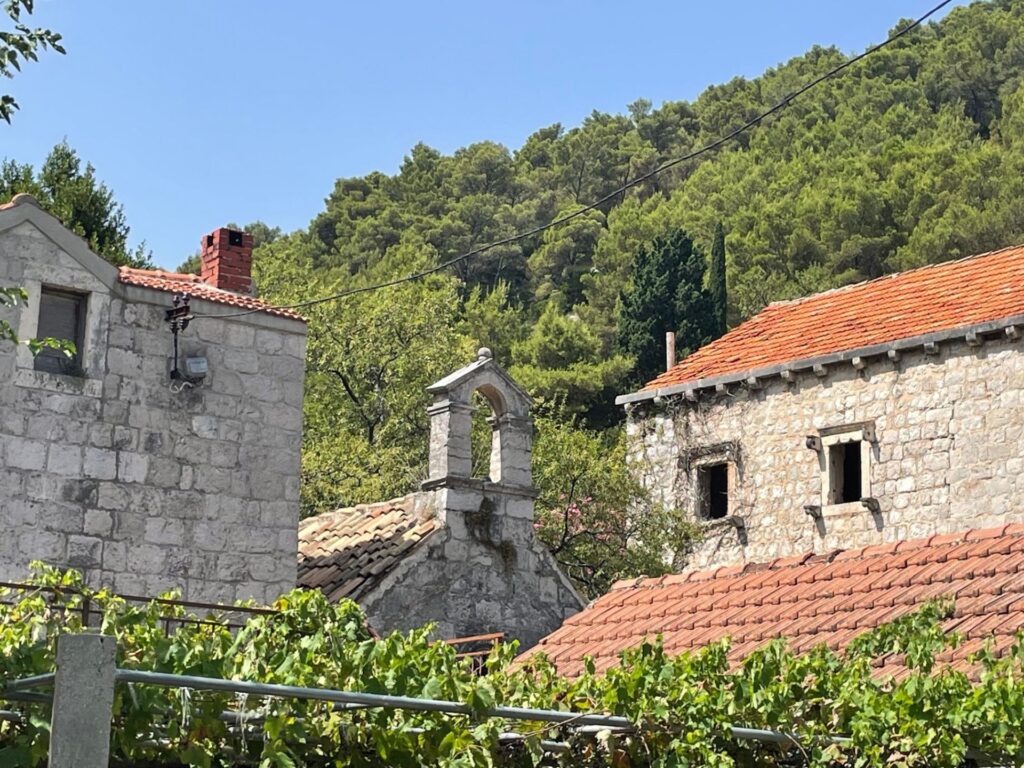
Except for the small port and restaurants, there are lots of cypresses and flowers and the ruins of the Betondić family summer residence with a small chapel dating back to the 18th century.
PAST
As we arrived early in the morning, we found a parking lot at the edge of the village, surrounded by oleanders, cypresses and pine trees. Passing through a narrow foot path with stone houses and gardens on both sides, after a few minutes we entered the almost abandoned village center with its charming port.
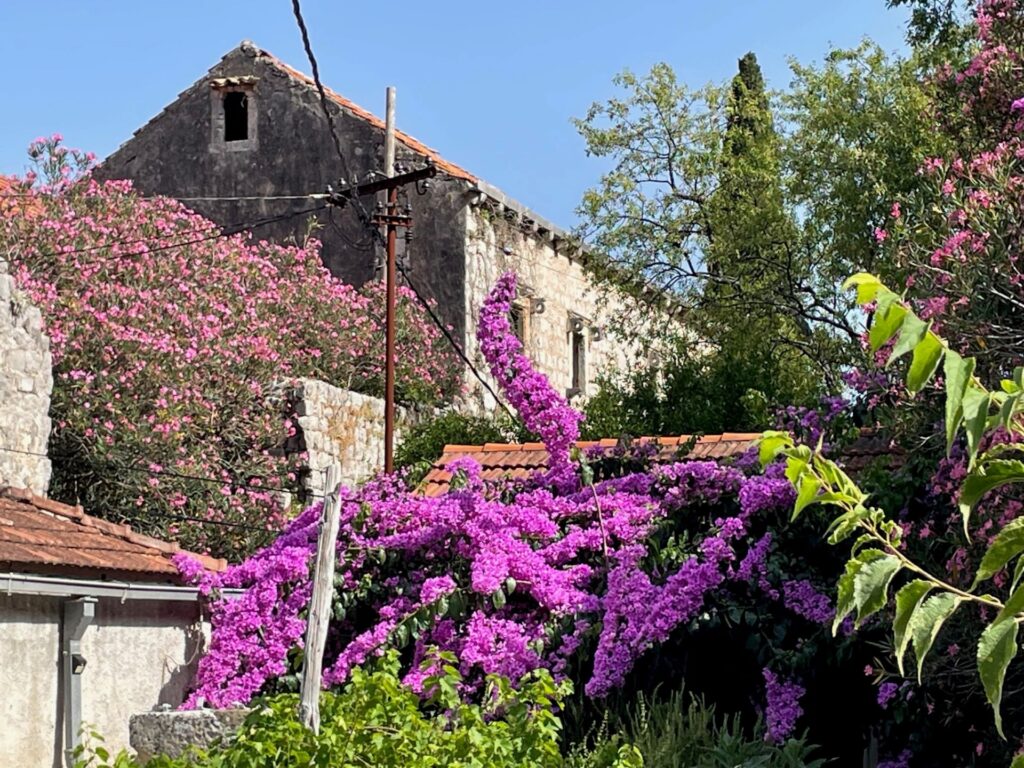
What happened to this village over the centuries? What do the ruins testify?
It was hard to believe that the history of Kobaš dates back to the 15th century, when the place was mentioned in documents of the Dubrovnik Republic as a lazaretto. According to an official regulation from 1422, the lazaretto was intended for those who arrived in Ston from ports infected with the plague.
In the 17th century, there were 11 families with 58 inhabitants living in Kobaš and in the 18th century, the noble Betondić family from Dubrovnik built a summer residence with chapel here. This is also the place where poet Jozo Betondić wrote his poetry and translated the works of Ovid.
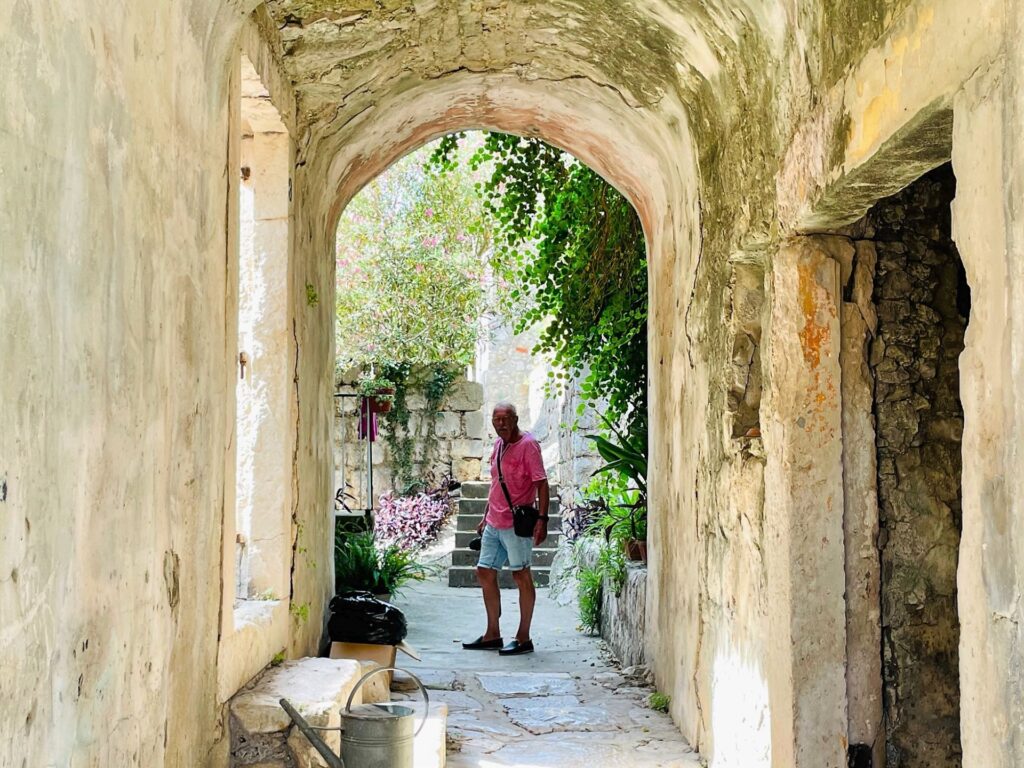
In the 20th century, Kobaš was known as a humble fishermen’s village inhabited by only 7 families.
But then a terrible disaster took place. In October 1943, during World War II, the Germans set the whole village on fire and killed all the innocent fishermen and their families. A monument above Luka’s Tavern still testifies this horrible event.
PRESENT
Nowadays, there are only two families living in Kobaš. Except for fishing, they are also engaged in olive growing. But in spring, everybody starts the preparations for the tourist season. Guests, who arrive here with their yachts, highly appreciate the fresh fish and Pelješac wines they can eat and drink here.
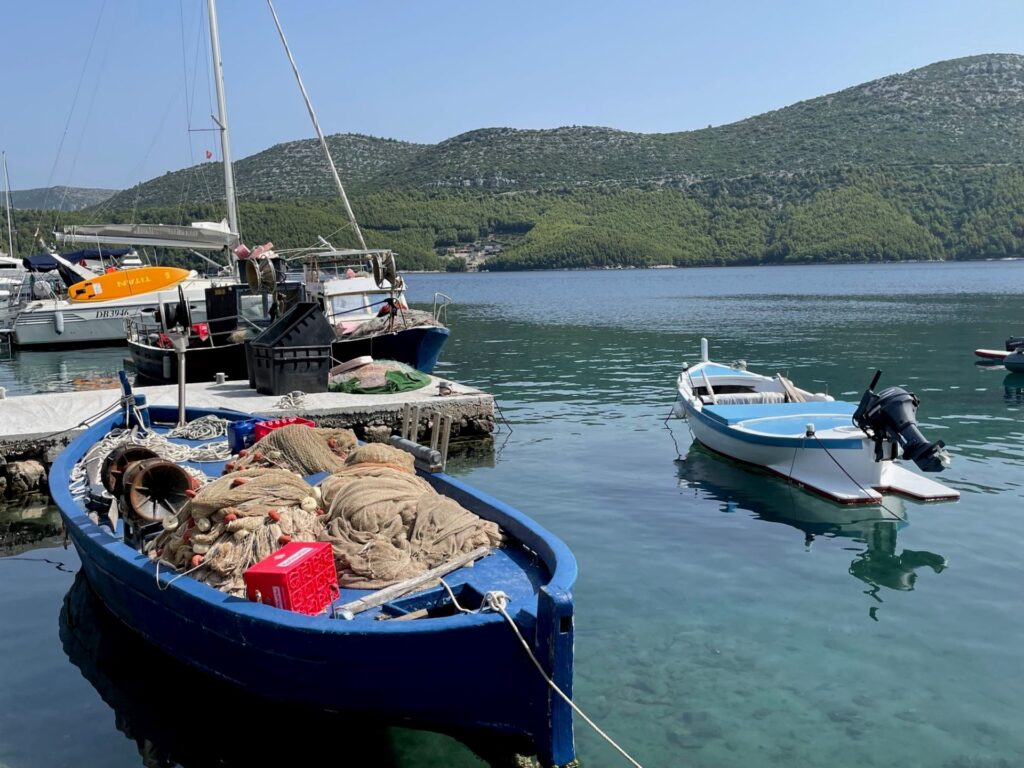
Three “konoba’s” (taverns) are located around the port: Luka’s Tavern with its original decorations, Ribarska Kuća (Fisherman’s House) and Gastromare, where Tony, the head chef, prepares his exquisite fish and sea food dishes in the open kitchen in front of his guests.
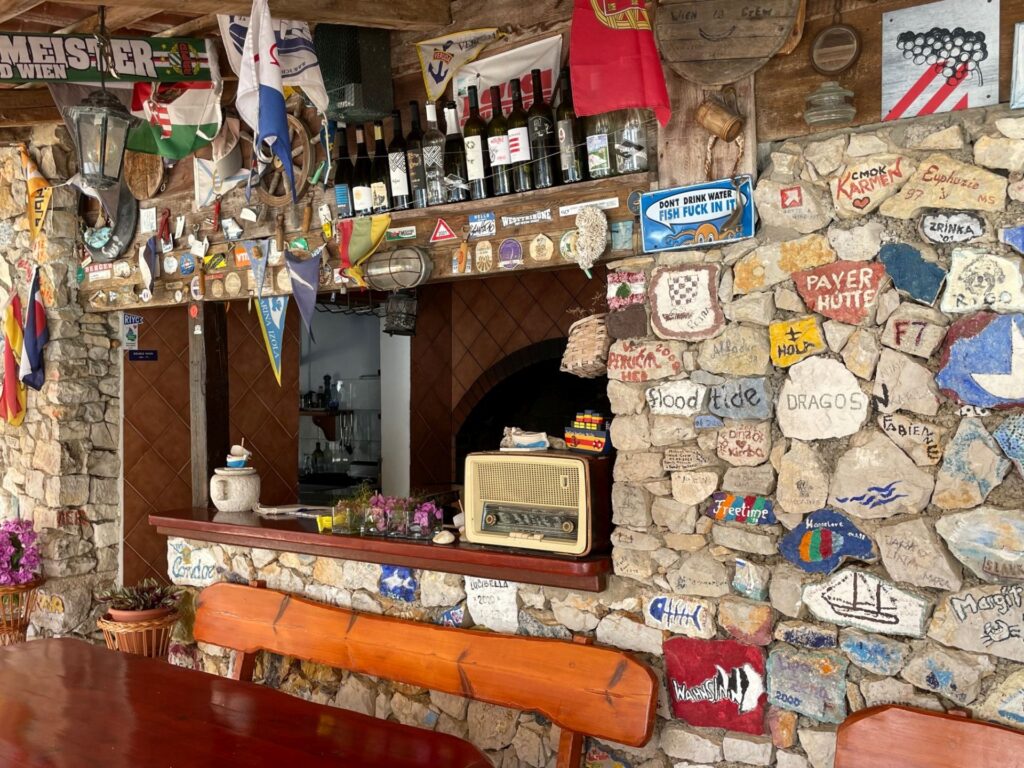
By chance, we met one of the inhabitants, when we were roaming through the ruins of the former summer residence. We discovered a fresh sign on an old stone wall with the word “Olivum”. A blond lady appeared behind the gate and asked us if we were interested to see her 300 years old olive press. Of course we were!
And so we met Sandra Stibor-Milovčić, a Croatian-Austrian woman who got a very special heritage – a few ruins, plots and olive groves in the village of Kobaš.
As a child, she had spent all her summer holidays in this romantic village and she had learned how to swim, sail and fish here and how to live in a small protected community.
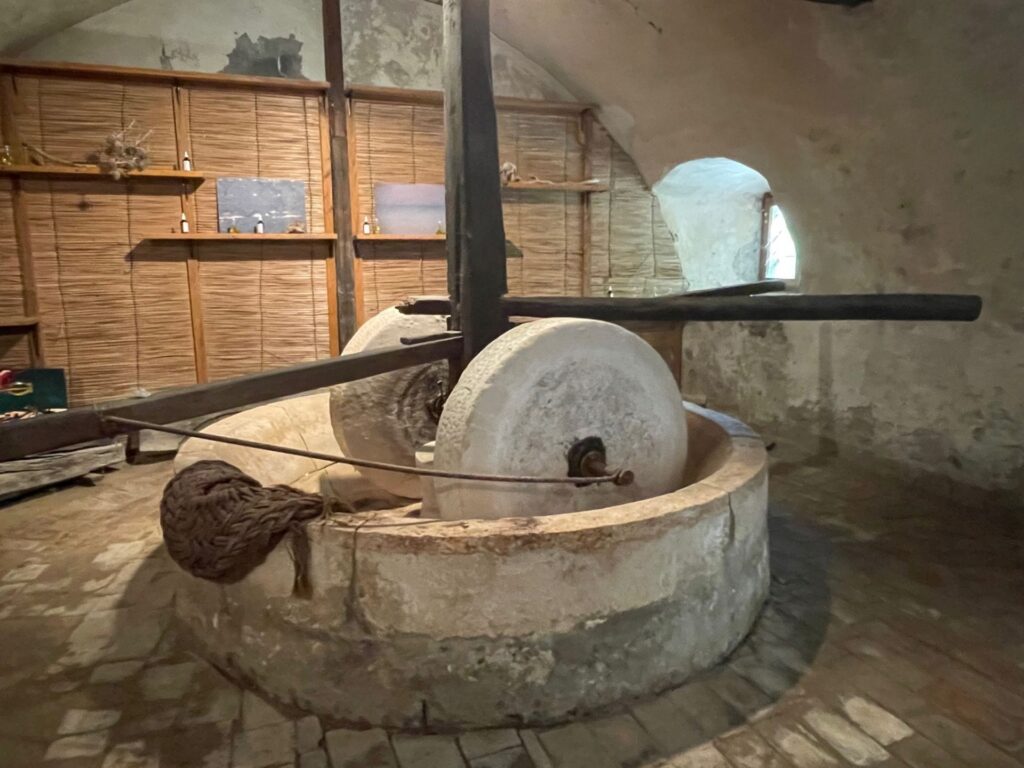
As an adult, she returned to the village to make her old dream come true. A few years ago, she restored the old olive mill that had been in the property of her family for the last 300 years.
We had never expected to visit such an original old olive mill, which, fortunately, was not destroyed by the Germans in World War II. The mill had been used by the inhabitants of this area for many, many years.
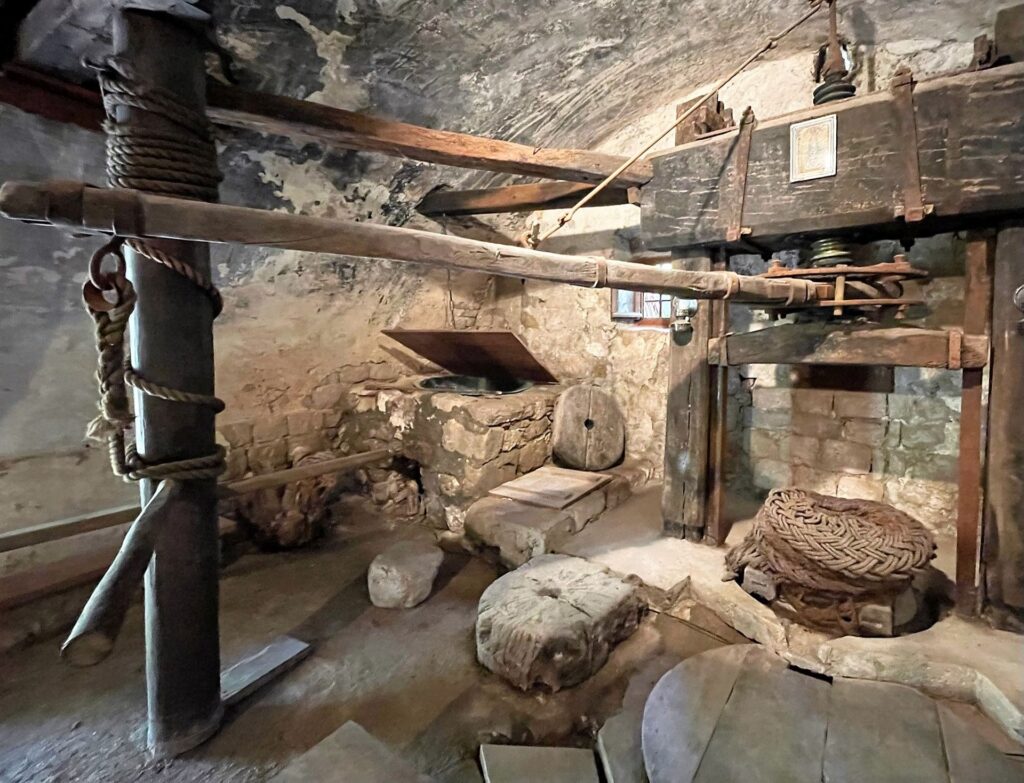
How did people produce olive oil in this ancient mill? After the harvest in November (by hand of course), the olives were washed and crushed by two large rotating wheels, which were powered by donkeys. In this way the olives were finally turned into paste. Then the olive paste was collected from the mill and stored on filtering traditional woven bags which were folded and placed one over the other in the bottom side of a traditional press. The mixture of water and olive oil was extracted and then poured into a tub, where oil could gradually come to the surface. The water was then drained off and the olive oil was stored in large stone vats.

Sandra now produces her own olive oil by cultivating the old olive trees in her property. She also sells special beauty products made of olive oil and she organizes walking tours through the olive groves. And finally, she organizes retreats here. What a wonderful idea to promote tourism in a small, hard-to-reach village!

Mooi om te horen dat Pelješac nu verbonden is met de vasteland!
Thanks for another great update on an off the beaten path region. Also nice to see you are all right and continue to produce content. It is all very much appreciated.